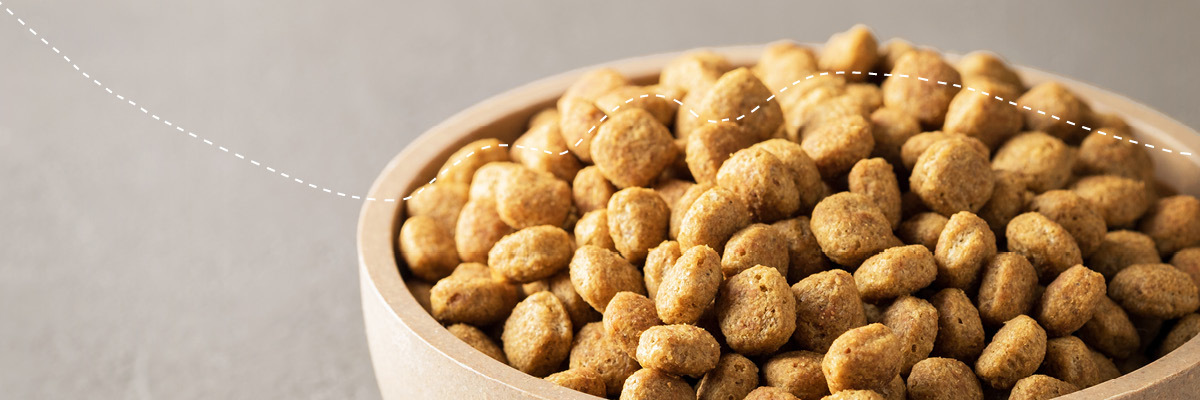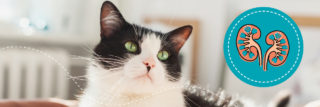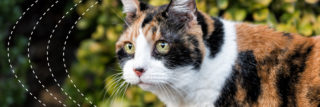
Elevated phosphate blood levels cause fear and anxiety in most cat owners. With chronic kidney disease (CKD), excess phosphate is a major contributor to the progression of kidney deterioration. And, as a result, to the faster death of the affected cat. However, there are ways in the management of CKD to counteract this scare.
PARATHORMONE AS A FREE RIDER
The cat ingests phosphate through its food. Due to the reduced kidney performance, excess phosphate can no longer be completely excreted in the presence of CKD. Consequently, there is an accumulation of phosphate in the blood (hyperphosphataemiaIncreased phosphate in the blood.) with the dreaded release of parathyroid hormoneParathyroid hormone (PTH) is a hormone secreted by the parathyroid glands, which regulates calcium levels in the blood. PTH is secreted in response to low blood calcium levels (hypocalcaemia). An increase in calcium concentration above the normal value inhibits PTH production (negative feedback). PTH stimulates... (PTH). PTH in turn causes a release of calcium and further phosphate from the cat’s bones. This leads to bone softening. Meanwhile, the calcium that is released cannot be used sensibly by the body. It is accumulated in organs, where it can lead to calcification of the kidneys and blood vessels. Calcification of the kidneys further fuels progressive destruction and ultimately CKD itself. A vicious circle develops in which increased PTH is released – originally triggered by phosphate.
Reduction of phosphate is a way out
Therefore, one of the most important concepts in the battle against CKD, besides the reduction of uraemic toxinsToxic, nitrogen-containing urinary substances responsible for uraemia and kidney damage.... (indoxyl sulphate is significantly involved in phosphate metabolism), is the restriction of phosphate itself.
Besides protein, muscle meat contains a lot of phosphate. Therefore it is not only highly digestible for the obligatory carnivorous cat, but also vital. For this reason, plant-based kidney diets have been developed. In addition to replacing muscle proteins with plant proteins (mostly wheat gluten) to reduce the phosphate content, the total protein content is also reduced in kidney diets. This was once based on the idea of reducing the formation of uraemic toxins through the breakdown of proteins by the microbiomeAll microbes on or within an animal’s tissues, for instance in the intestines (intenstinal flora = the totality of all microorganisms that colonise the intestine). It includes bacteria, protozoa, fungi and viruses..... Kidney diets date back to a time when there was no other way to reduce phosphate and uraemic toxin levels.
Taste is not to be neglected
However, protein-reduced kidney diets are an unsatisfactory solution, especially for the meat-loving cat. A reduction of protein in the food often goes hand in hand with a loss of palatability. This is often a reason for many cats to refuse the kidney diet given to them. The most important thing for a cat suffering from CKD is to eat. This keeps the cat on its feet. Reducing protein has been recommended especially in the later stages of CKD, when clinical signs triggered by the damaging effects of uraemic toxins appear. In early CKD stages, however, protein reduction through renal diets is even undesirable. Protein reduction can lead to a loss of muscle mass. This is because cats are so dependent on a high supply of protein that their metabolism starts to digest their own muscles if the intake via food is too low.

Highly digestible, makes it tasty for the cat
Low appetite is characteristic for cats with chronic kidney disease. Highly digestible proteins (muscle meat; offal) can provide a remedy due to their high palatability and thus positively influence the appetite of the CKD cat for a long time. (see blog post Tasteless palatability)
The conflict over harmful uraemic toxins can now be easily circumvented with oral dialysis. The effect of the uraemic toxins on the progression of CKD and the resulting increased mortality can thus be overcome. For this purpose, a special adsorber (Renaltec® in the form of tiny black beads) is mixed into the cat’s food once a day. The adsorber collects the preliminary stages of uraemic toxins formed from protein degradation in the cat’s intestine and is then – filled with the harmful substances – simply excreted in the faeces.
Oral dialysis and phosphate binders – the future path?
Besides the reduced intake of phosphates achieved by kidney diets, a reduction of feed phosphate is also possible via phosphate binders. These are mixed into the feed and absorb phosphate of the feed in the intestine.
Phosphate binders form insoluble complexes in the intestine together with the feed phosphates. These are not absorbed into the blood, but are also excreted in the faeces. Consequently, the excretion of phosphate via the faeces increases. This reduces the blood phosphate level.
These phosphate binders can be given with the cat’s favourite food and are usually already able to reduce the phosphate blood level sufficiently. The good thing is that the phosphate binders can be dosed independently of the amount of food. In addition, phosphate binders can be given with any form of wet feed, including kidney diets. This makes their use very versatile. This also applies to oral dialysis via the above-mentioned special adsorber. The desired effects of phosphate and protein reduction of kidney diets can therefore also be achieved with oral dialysis and phosphate binders without having to change the cat’s food. Oral dialysis and phosphate binders can also be added to kidney diets. This is conceivable, for example, especially in the late stages of CKD.
Not all phosphate binders are the same
In contrast to oral dialysis, which has so far only been described with Renaltec®, different phosphate binders are available. These differ in their absorption capacity for phosphate and their influence on the electrolyte metabolism (especially calcium). In veterinary medicine, calcium and magnesium salts such as calcium carbonate have been approved for this purpose. Calcium carbonate (e.g. in Ipakitine® and Pronefra®) has its highest binding capacity for phosphate in the acidic environment of the stomach. In the intestine, however, a more neutral milieu prevails in which calcium carbonate is poorly soluble and therefore binds less phosphate. Due to its calcium component, problems can arise with regard to calcium metabolism. Besides stomach and intestinal problems, increased calcium blood levels can lead to calcification of organs and also to bone diseases. Calcification of the kidneys leads to kidney destruction and must therefore be given special attention in CKD.
In the USA, there is also chitosan as a binder (chitosan is also contained in Ipakitine® and Pronefra®), which is also supposed to bind urinary substances in the gastrointestinal tract. In fact Chitosan is a non-specific adsorber that adsorbs fats to a high degree and can also bind many other substances. Studies on rats have shown that they lose weight when given a chitosan product and that chitosan can lead to deficiencies. This should therefore be observed in CKD cats.
Lanthanum carbonate
Another carbonate is known from human medicine, which is combined with the rare earth, lanthanum, to form lanthanum carbonate. The absorption capacity for phosphate is higher with lanthanum carbonate than with the calcium carbonates. And it is also optimal in both the acidic environment of the stomach and the neutral environment of the intestine. Furthermore lanthanum carbonate also has few side effects in cats: trials with 10-fold overdoses over 2 weeks did not lead to side effects. In cats with kidney disease, a clear reduction of the phosphate blood level could be achieved. In studies on CKD cats, lanthanum carbonate led to an improvement in the quality of life that was not achieved to the same extent by the kidney diets used in the control group.
Bibliography:
- Welsch, B. (2009): Die Chronische Niereninsuffizienz der Katze was leisten die verschiedenen Phosphatbinder? Kleintiermedizin 1/2 -2009.
- Anraku, M. et al. (2014). Antioxidant and renoprotective activity of chitosan in nephrectomized rats. Carbohydrate Polymers, 89(1), 302–304.


